Axolotl
Eyelash Crested Gecko
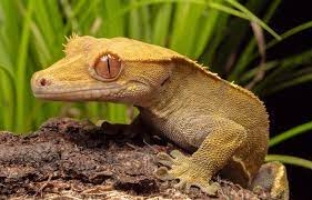
The eyelash crested gecko is a beautiful little snake that can be found in the rainforests of New Caledonia. It can also be found breeding in the United States and Europe. In this article we’ll explore what they eat, how they are bred, and where they live.
Breeding in Europe and the United States
The crested gecko, or eyelash gecko, is an arboreal lizard native to the South Province of New Caledonia. They live in the canopy of humid forests.
It is one of the most widely kept gecko species. These geckos come in a variety of colors. In the wild, they eat ripe fruit and small insects.
While they are very hardy and can live up to 15 years, they can be prone to bacterial and fungal infections. The best prevention is to maintain healthy habitat conditions.
During breeding, these geckos lay two eggs. The eggs hatch in 60 to 150 days.
The crested gecko has a long prehensile tail, which accounts for half of its total length. When threatened, the gecko sheds its tail. This helps improve its acrobatics.
Habitats
The eyelash crested gecko is an arboreal lizard native to New Caledonia. They were thought to have died out, but in 1994 they were rediscovered.
These geckos can live up to 20 years if kept in a good environment. They are considered to be a relatively easy pet to keep. However, you should be aware of their unique needs.
They need a large enclosure to thrive. This should be at least 20 gallons in size. Ideally, it should be one that is vertical. In addition, they need a variety of plants and branches to climb.
When you are getting ready to buy an eyelash gecko, you should consider how they will fit into your home. You may want to keep them in a quarantine area until you are sure they will not spread any disease to your other pets.
Diet
Eyelash crested geckos are popular with owners for their docile personalities. They are also easy to care for. Their nocturnal nature and low bites make them a good choice for beginners.
In order to feed eyelash crested geckos, you should give them a combination of fruit and vegetables. Some of their favorite fruits include bananas, mangoes, and papayas. Other favorites are escarole, alfalfa, and dandelion greens.
The diet of eyelash geckos should be supplemented with calcium and vitamin D. These two minerals are essential for healthy body functions. You can increase their intake by dusting insects with a multivitamin powder.
Most commercially raised insects lack several important nutrients. You can boost their vitamin intake by dusting them with a calcium/vitamin D3 powdered supplement.
Crested geckos need to be kept active at night. This means you should provide them with clean water. Make sure you have a shallow dish for them to drink from.
Body temperature
The body temperature of eyelash crested geckos varies. Although these geckos prefer warmer temperatures during the day, they can handle low nighttime temperatures. They don’t require a basking lamp or other heating source, but they do need a good humidity level.
During the day, a crested gecko should have an average temperature of 72 degrees Fahrenheit. You may also want to keep a misting system near the terrarium to help regulate the humidity levels.
During the nighttime, a gecko needs an average temperature of 65 to 75 degrees. An inexpensive red nightlight bulb works well for this purpose.
In addition to keeping an eye on the ambient temperature, you may also wish to use a thermometer. A probe thermometer will give you an accurate read.
Nesting in the rainforests of New Caledonia
The Eyelash Crested Gecko (Correlophus ciliatus) is native to New Caledonia. It is an omnivorous, crepuscular animal. It lives in tropical forests, but it is also found in New Guinea, Tasmania, and Australia.
The crested gecko has a wedge-shaped head with two rows of spines. In addition, it has hair-like projections on the skin above its eyes.
They can be a very attractive species of gecko, and they are commonly kept as pets. They are also highly social. During the night, they will explore the surroundings. At daytime, they spend most of their time in the thick foliage of the forest floor. Occasionally, they will forage for food at night.
This gecko has claws that help it climb and cling to surfaces. Their tails are long and semi-prehensile. While they are nocturnal, they are mainly fruit eaters.
Axolotl
Understanding the Leopard Gecko as a Pet: A Comprehensive Guide
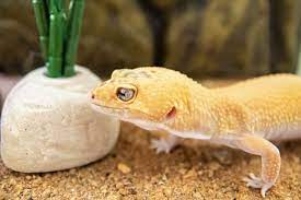
Introduction
Leopard geckos are one of the most popular pet reptiles in the world. They are small, gentle, and easy to care for, making them ideal pets for both experienced reptile owners and first-time pet owners. However, despite their popularity, there is still a lot of misinformation and misconceptions about these fascinating creatures. In this article, we will take a closer look at the leopard gecko, exploring everything you need to know about their natural habitat, care requirements, and behavior.
Natural Habitat
Leopard geckos are native to the arid and semi-arid regions of South Asia, including Afghanistan, Iran, and Pakistan. In their natural habitat, they live in rocky outcroppings and burrow in the soil to escape from the heat. They are nocturnal creatures and are most active during the evening and night, hunting for insects and other small prey.
Care Requirements
When it comes to caring for your leopard gecko, there are a few key things to keep in mind. First and foremost, you need to provide them with a suitable habitat. This includes a spacious terrarium with a substrate for digging and hiding, a basking spot for warming up, and a water dish for drinking and soaking. Additionally, you will need to provide them with a healthy and varied diet, consisting of live insects and occasional supplements of fruits and vegetables.
Behavior
Leopard geckos are relatively docile and easy-going creatures, which makes them great pets for families with children. They are not aggressive and do not bite, making them ideal pets for handling. They are also relatively independent, which means they do not require a lot of attention or interaction, making them ideal pets for busy owners. However, they do need to be handled regularly to maintain their trust and confidence, and to avoid stress and anxiety.
Health
Leopard geckos are generally hardy and healthy creatures, but like all reptiles, they are susceptible to certain health problems. Some of the most common health issues include skin infections, respiratory infections, and parasite infestations. To keep your leopard gecko healthy, it is important to provide them with a clean and hygienic habitat, a balanced diet, and to regularly monitor their health and seek veterinary care if necessary.
Breeding
Breeding leopard geckos can be a rewarding experience, but it is also important to be well-informed about the process. Female leopard geckos can lay up to two clutches of eggs each year, and the eggs will hatch in around 60 to 90 days. During this time, the eggs need to be kept at the right temperature and humidity to ensure proper development, and the hatchlings will need to be provided with a suitable habitat and diet.
Common Myths
Despite their popularity, there are still many myths and misconceptions about leopard geckos. Some people believe that leopard geckos are difficult to care for, or that they are aggressive and bite. However, these myths are simply not true, and leopard geckos are actually quite gentle and easy to care for. It is important to dispel these myths and educate people about the true nature of these fascinating creatures.
Conclusion
Leopard geckos are a great pet for reptile enthusiasts and first-time pet owners alike. With the right care and attention, they can live long and healthy lives, and provide their owners with years of joy and companionship. Whether you are an experienced reptile owner or just starting out, a leopard gecko is a great choice for your next pet.
Axolotl
Moss Ball Petsmart: A Comprehensive Guide
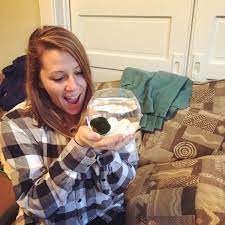
A moss ball, also known as a Marimo ball, is a unique and fascinating addition to any aquarium. These spherical clusters of green algae have become increasingly popular as pets and are now widely available at pet stores such as PetSmart. In this article, we will explore everything you need to know about moss balls and how to properly care for them in your own aquarium.
What is a Moss Ball?
A moss ball is a species of green algae that grows into a ball-like shape. The scientific name for this algae is Aegagropila linnaei and it is native to freshwater lakes in Japan, Iceland, and Europe. These balls of moss are soft and velvety to the touch, and they are often used as a natural filter in aquariums. They absorb impurities from the water and provide a habitat for beneficial bacteria, helping to maintain a healthy and balanced ecosystem in your aquarium.
Benefits of Having a Moss Ball in Your Aquarium
There are several benefits to having a moss ball in your aquarium, including:
Natural Filter
As mentioned, moss balls act as a natural filter, absorbing impurities from the water. This helps to keep your aquarium clean and healthy, which is beneficial for all of your aquatic pets.
Low Maintenance
Moss balls are extremely low maintenance. They do not need to be fertilized, and they do not require special lighting or equipment. Simply place them in your aquarium and watch as they grow and thrive.
Aesthetically Pleasing
In addition to their practical benefits, moss balls are also aesthetically pleasing. Their bright green color adds a pop of color to your aquarium and their unique shape adds interest and texture to your underwater landscape.
How to Care for Your Moss Ball
Caring for your moss ball is simple and straightforward. Here are the key things you need to know:
Lighting
Moss balls do not require special lighting, but they do need some light to thrive. Place your moss ball near a light source, but not directly in the light, as this can cause it to dry out.
Water Quality
Moss balls are sensitive to water quality and they will not thrive in water that is too dirty or contaminated. Make sure to regularly clean your aquarium and change the water as needed.
Temperature
Moss balls prefer cooler water temperatures, between 60-70°F. If the water in your aquarium is too warm, it can cause your moss ball to break apart.
Placement
Moss balls do not have roots, so they can be placed anywhere in your aquarium. However, they should not be placed near any strong currents or filtration systems, as this can damage the delicate algae.
Propagation
Moss balls can easily be propagated by gently pulling apart the algae and separating it into smaller balls. This allows you to create multiple moss balls from a single one, making it a great value for your aquarium.
Conclusion
In conclusion, moss balls are a unique and fascinating addition to any aquarium. They act as a natural filter, provide a habitat for beneficial bacteria, and add interest and texture to your underwater landscape. With proper care, moss balls can thrive in your aquarium for many years, making them a great investment for any aquarium enthusiast.
Axolotl
Understanding Fluval Canister Filters: A Comprehensive Guide
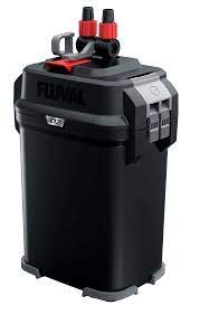
Introduction
Fluval canister filters are an essential part of any aquarium setup. They play a crucial role in maintaining the health and cleanliness of your fish and plants, providing a clear and healthy environment for them to thrive in. In this comprehensive guide, we will explore everything you need to know about Fluval canister filters, from their functions and benefits to the different types available and how to choose the right one for your aquarium.
What are Fluval Canister Filters?
A Fluval canister filter is a type of external filtration system that uses a canister filled with filtration media to clean and filter water in your aquarium. It is a popular choice among aquarium owners due to its efficient and effective filtration, quiet operation, and customizable options.
Functions and Benefits of Fluval Canister Filters
Fluval canister filters have a multi-stage filtration process that removes impurities and contaminants from the water in your aquarium. This includes mechanical filtration, which removes solid waste and debris, biological filtration, which removes toxic nitrogen compounds, and chemical filtration, which removes pollutants and odors. These filters also provide a high flow rate, which helps to improve water circulation and oxygenation, creating a healthy environment for your fish and plants.
Different Types of Fluval Canister Filters
There are several different types of Fluval canister filters available, each designed for specific aquarium sizes and types. These include:
- Fluval 106 Canister Filter
- Fluval 206 Canister Filter
- Fluval 306 Canister Filter
- Fluval 406 Canister Filter
Each of these filters has unique features and capabilities, making it important to choose the right one for your aquarium.
Choosing the Right Fluval Canister Filter
When choosing a Fluval canister filter, it is important to consider the size of your aquarium, the types of fish and plants you have, and your filtration needs. You should also consider the flow rate and filtration capacity of the filter, as well as its ease of maintenance and customization options.
Maintenance and Cleaning
Maintaining and cleaning your Fluval canister filter is an important part of keeping your aquarium healthy and clean. Regular maintenance includes cleaning the filter media, checking the hoses and connections, and cleaning the impeller and motor. It is also important to replace the filter media periodically to ensure its effectiveness.
Conclusion
In conclusion, Fluval canister filters are an essential part of any aquarium setup, providing efficient and effective filtration, improved water circulation and oxygenation, and a healthy environment for your fish and plants. With their customizable options and multi-stage filtration process, Fluval canister filters are a popular choice among aquarium owners. When choosing a Fluval canister filter, it is important to consider the size of your aquarium, your filtration needs, and the types of fish and plants you have. Regular maintenance and cleaning are also essential to keep your filter working effectively and maintain a clean and healthy aquarium environment.
-
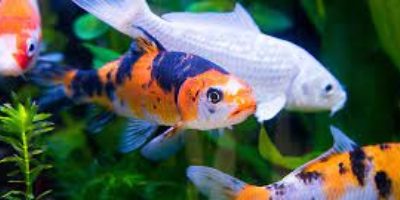
 Exotic1 year ago
Exotic1 year agoChoosing Koi Fish From Petsmart
-

 Dog2 years ago
Dog2 years agoPomeranian Dog Best Bread Information
-
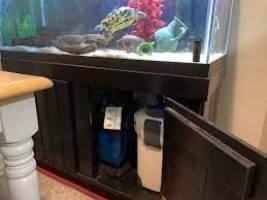
 Turtle2 years ago
Turtle2 years ago8 Best Filters For Turtle Tanks
-
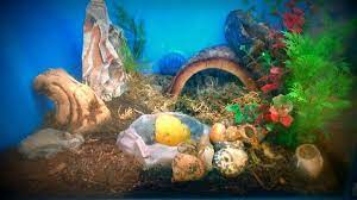
 Turtle2 years ago
Turtle2 years agoPetSmart Crabs – The Right Way to Care For Your Pet Crabs
-
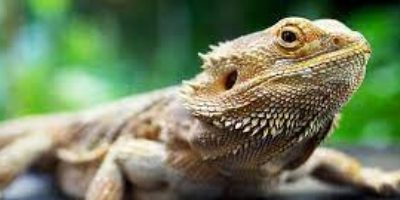
 Exotic10 months ago
Exotic10 months agoBuying a Bearded Dragon For Sale From PetSmart? Read This First
-

 Login10 months ago
Login10 months agoanimal shelters near me
-

 CAT1 year ago
CAT1 year agoBuying a Whisker City Water Fountain
-

 Dog2 years ago
Dog2 years agoLarge Münsterländer And Its Breed In 2022
